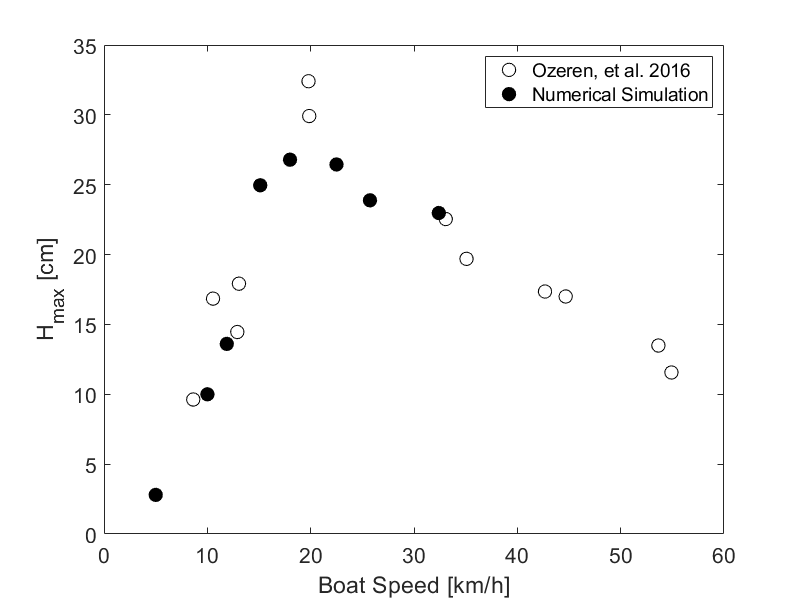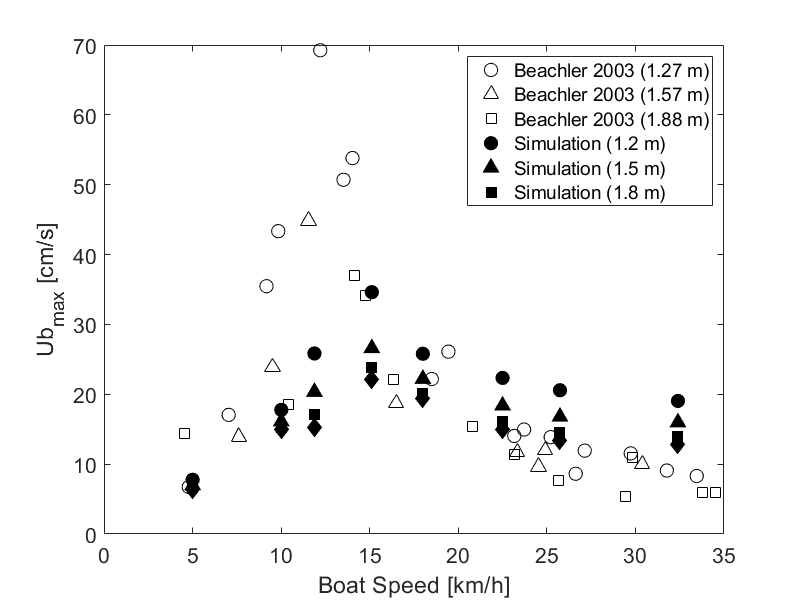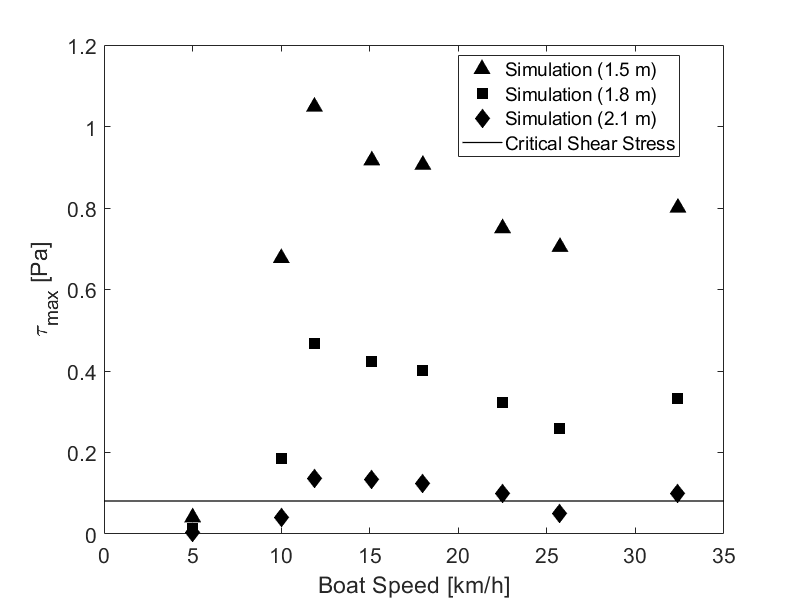3D Flow Structures During Upwelling in Lakes of Moderate Size
Upwelling can drive impacts of ecological nature and exert changes in the water quality. Conceptual models generally classify the lake response during active wind forcing into either an Ekman or coastal upwelling model (rotational) or a 2D, closed basin (non-rotational) conceptual model. The non-rotational model is broadly applied in rotationally influenced lakes. Nonetheless, in stratified water bodies, the upwelling response to winds may exhibit flow dynamics that cannot be described by applying a single conceptual model. Numerical simulations undertaken at a lake of moderate size (i.e., Lake Tahoe, California-Nevada, USA) showed upwelling occurring at the upwind boundaries as well as along-wind boundaries. The results indicate that upwelling, in rotationally influenced lakes, can not be described following a single conceptual model. During wind forcing on the downwelled shores, alongshore currents developed in response to wind forcing and flowed counterclockwise after the winds relaxed. These cyclonic currents were found to follow jet-like velocity profile with peak velocities of up to 35 cm/s. The high speed of the cyclonic motions likely generates horizontal transport of constituents and plays a relevant role in the water quality dynamics during upwelling events.
The presence of upwelling occurring at upwind boundaries and along-wind shores raises the need to further investigate the lake conditions at which the lake response to wind forcing can be described following one of the upwelling conceptual models. To-date, the thresholds for differentiating the upwelling response from the 2D closed basin response to the Ekman upwelling are not currently well defined.
This research has recently been accepted for publication at the Water Resources Research Journal and the full content of the investigation will be available soon. This research was partially founded by the David and Dana Loury Foundation Fellowship and the Tahoe Environmental Research Center.
Boat Induced Sediment Resuspension in the Nearshore Area of a Lake
Water clarity in rivers, lakes, and estuaries is of major concern in different parts of the world; it is of continuous research interest due to its high complexity and adverse implications. Boats in shallow flows can stir up sediments into the water column, causing water clarity losses. Our study investigates sediment resuspension due to boat activity in shallow flows.

Our computations show that 3D numerical simulations can predict adequately the boat induced shear stresses close to beds, which can be applied to river flows. In addition, the numerical simulations also showed the capability of predicting accurately the boat wake at different vessel speeds, which turns out to be of interest for water-quality and ecosystem challenges in rivers and estuaries. Considering a critical shear stress 0.81 Pa, it is estimated to experience sediment resuspension for boats traveling at speeds greater than 10 km/h in shallow waters of up to 2.5 m deep.



The full content of this work was published in the conference proceedings RiverFlow 2020, and the citation to access the full text can be found in the publications tab of this website.